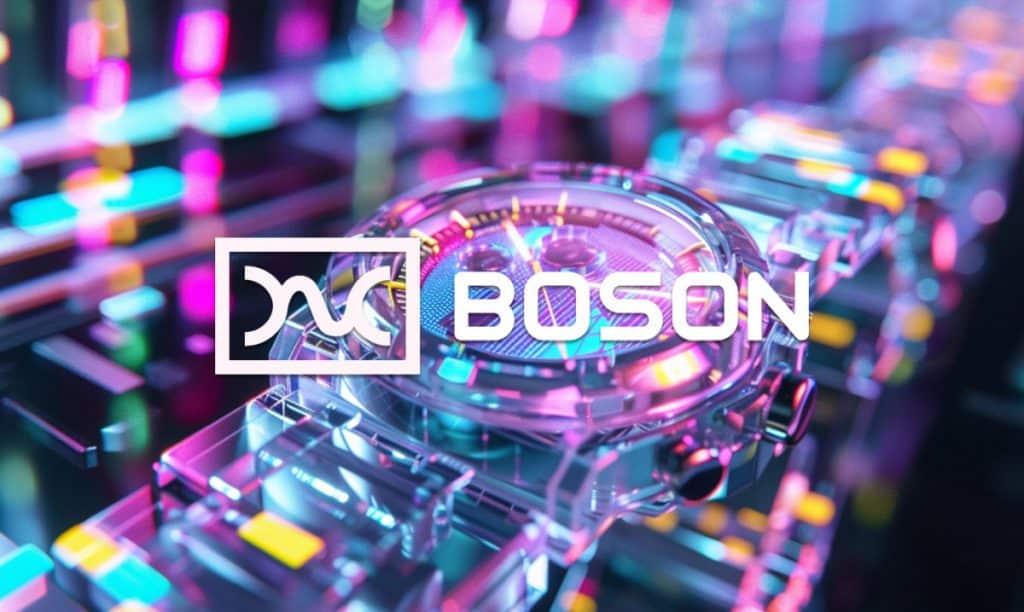Web3 commerce layer Boson Protocol Launches Fermion for Tokenizing Physical Assets


In Brief
Boson Protocol launched Fermion, a second protocol aimed at tokenizing verified physical RWAs into an on-chain fractional market.

Justin Banon, founder of Web3 decentralized commerce layer Boson Protocol (BOSON), announced the development of a new protocol named ‘Fermion’ (FERMION). The protocol aims to tokenize verified physical Real-World Assets (RWAs) into an on-chain fractional market, facilitating the on-chain exchange of high-value physical RWAs, such as watches, vintage wine and fine art.
Incorporating trusted verifiers and custodians in its design, Fermion aims to meet the demand for increased verification standards of physical RWAs, achieve improved capital efficiency, and extended tokenization duration.
“Fermion was born out of a mission to enable a new computable economy and unlock exponential wealth by building the technology to bring real-world assets on-chain. Now, with Fermion, we’re seeking to bring more high-value RWAs on-chain,” said Justin Banon, Founder of Boson Protocol.
The Boson-Fermion ecosystem will provide comprehensive coverage of the multi-trillion-dollar market for the tokenization of physical RWAs.
Boson was created to tokenize commerce products from the moment of sale until redemption. However, for scenarios involving the long-term holding of items such as cases of fine wine, art, or luxury watches, tying up funds for extended periods is not commercially practical.
In contrast, Fermion takes a different approach by tokenizing assets from the point of sale, allowing them to be secured by the custodian throughout the entire sale duration. The seller receives payment upon verification, making this process capital efficient and capable of supporting tokenization for an indefinite period. Additionally, Fermion facilitates the native tokenization of assets through the ERC-404 fractional NFT standard.
Fermion is being backed by Web3 accelerator and investor Outlier Ventures, who staked an undisclosed amount of their BOSON token holdings in the platform to foster adoption and facilitate liquidity within the platform.
The $FERMION token will serve as the core economic unit within the Fermion ecosystem, ensuring transparent and fair governance while facilitating consensus on critical ecosystem decisions.
In addition to incentivizing both buyers and sellers to participate in the ecosystem, the $FERMION token will enable sellers to reduce network fees through staking. The initial distribution of the Fermion token will occur through a stakedrop on a one-to-one ratio to $BOSON token holders who choose to stake their tokens for a six-month period.
Founded in 2019, Boson Protocol operates as Web3’s decentralized commerce layer, facilitating the trade of any physical item as redeemable non-fungible tokens (rNFTs). rNFTs function as NFT vouchers for items, allowing them to be bundled to create phygitals and digital twins. In 2022, Boson Protocol launched an NFT platform, enabling users to sell tangible items in the form of non-fungible tokens that can be burned and redeemed within a specified time frame.
Tokenized RWAs Gain Momentum
RWA tokenization has recently been gaining momentum, driven by its capacity to bring off-chain assets onto blockchains, allowing for enhanced transparency and efficiency within the blockchain ecosystem. As Binance analysts note in the recent report — as long as interest rates stay at elevated levels, tokenized treasuries are expected to remain an appealing investment choice.
Meanwhile, the market capitalization of tokenized RWAs achieved new all-time highs, reaching $2.774 billion. This calculation takes into account the value of RWA tokens, exemplified by Ondo’s OUSG and Tether’s XAUT, existing on public blockchains, excluding stablecoins and issuer tokens like ONDO and CFG from assessment, according to Galaxy research.
The evolving landscape of tokenized RWA, marked by innovations like Fermion by Boson Protocol, signifies the enduring appeal of tokenized treasuries in the face of elevated interest, highlighting the transformative potential of blockchain technology in reshaping traditional financial paradigms.
Disclaimer
In line with the Trust Project guidelines, please note that the information provided on this page is not intended to be and should not be interpreted as legal, tax, investment, financial, or any other form of advice. It is important to only invest what you can afford to lose and to seek independent financial advice if you have any doubts. For further information, we suggest referring to the terms and conditions as well as the help and support pages provided by the issuer or advertiser. MetaversePost is committed to accurate, unbiased reporting, but market conditions are subject to change without notice.About The Author
Alisa is a reporter for the Metaverse Post. She focuses on investments, AI, metaverse, and everything related to Web3. Alisa has a degree in Business of Art and expertise in Art & Tech. She has developed her passion for journalism through writing for VCs, notable crypto projects, and scientific writing. You can contact her at alisa@mpost.io
More articles

Alisa is a reporter for the Metaverse Post. She focuses on investments, AI, metaverse, and everything related to Web3. Alisa has a degree in Business of Art and expertise in Art & Tech. She has developed her passion for journalism through writing for VCs, notable crypto projects, and scientific writing. You can contact her at alisa@mpost.io






















































